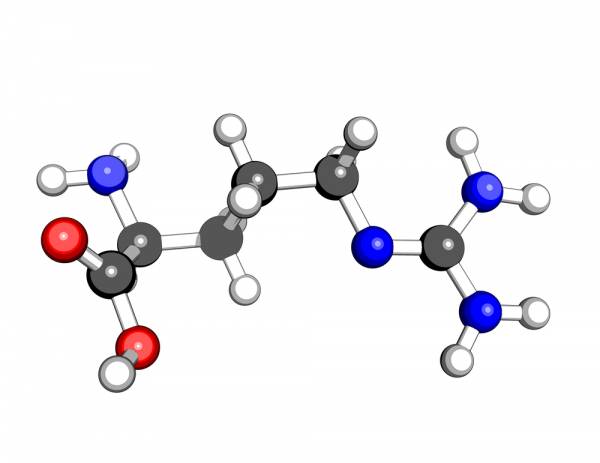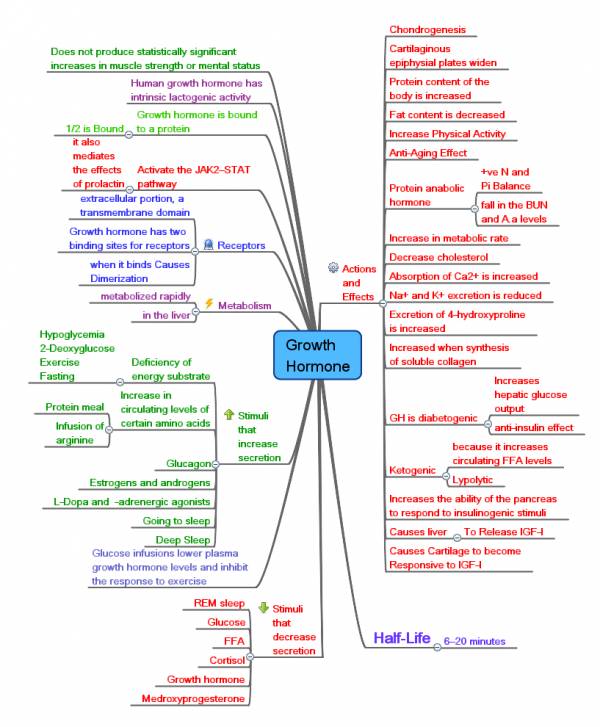Women make more growth hormone (GH) than men. This is a (strange, but true) fact we established in my last article. We also established that the production of estrogen seems to be positively correlated with our levels of human growth hormone.
Women make more growth hormone (GH) than men. This is a (strange, but true) fact we established in my last article. We also established that the production of estrogen seems to be positively correlated with our levels of human growth hormone.
The more estrogen we have circulating, the more growth hormone we produce. So, what does this really mean for us? Can we capitalize on our production of growth hormone? What happens when we aren’t making as much estrogen anymore? And can we use supplements and nutrition to enhance production of growth hormone and its effects?
Growth Hormone, Estrogen, and Testosterone
First, we make more growth hormone than men. Weird, right? It’s a pretty darn anabolic hormone and given that men are generally so much bigger and more muscular than us ladies, it seems odd that we make more.
How is it we aren’t hulking she-beasts? Well, while there aren’t a lot of studies out there discussing this, I feel we don’t get as muscular as men largely due to the fact we do not make as much testosterone as men. Yes, while we make a lot of growth hormone, without coupling that with testosterone, muscle growth is limited.
However, it is very common to see women start to lose muscle and gain fat when they start going through menopause (when their estrogen starts to decrease).
Most people associate this with the drop in estrogen, but I am inclined to think it is the combination of the loss of estrogen and growth hormone that contributes to this problem.
Growth hormone and estrogen both have positive effects on hair, skin, and nails, and when we go through menopause these things tend to suffer. We lose our hair, our skin gets dry and creepy, our nails break and crack. I truly believe these two things combined and their dramatic reduction causes accelerated aging, loss of muscle and fat accumulation.
Bio-Identical Hormone Therapy
Which brings up a great question, what in the heck do we do when we go through menopause and our estrogen takes a nosedive? Well, if you ask me, I say find someone who specializes in bio-identical hormone replacement and start bio-identical estrogen (and probably testosterone) therapy.
We know that women and men who are given exogenous estrogen produce more growth hormone. We also know that once the ovaries stop working our estrogen level plummets, and you’ll be hard pressed to get your natural levels to come up on their own.
Thus, the only way you can really get adequate levels of estrogen and therefore, healthy levels of growth hormone, is to supplement estrogen. Bio-identical therapy is the safest and most beneficial way to go about doing that.
What’s Up With the Muscle-y Ladies?
Of course, we all know some women who are naturally much more muscular than average and if you’re into fitness and health this is usually seen as a good thing. Of course, many of us see a muscular woman and jump to the conclusion she must be using steroids.
Before we accuse these ladies of “using,” let’s consider they may be making the most of their higher growth hormone production. There are several ways they may be doing things differently that allows them to take advantage of their GH.
First, these muscular women are probably engaging in some very intense exercise. Hard-hitting workouts increase growth hormone levels in both men and women, with the highest GH production occurring when workouts last longer than ten minutes and push athletes past their lactate threshold.
General strength training has been shown to increase GH levels in both men and women. However, women need more intense strength training with less rest and more work done in a set amount of time to raise their growth hormone above baseline.
This may be why we see women who engage in intense workouts like CrossFit developing more muscular and leaner physiques. The intense exercise, little rest, and considerable volume of work CrossFit athletes engage in on a regular basis primes their bodies to produce more GH, form muscle, and burn fat.
Women athletes can also maximize their GH production by eating protein post-workout. Studies have shown GH levels increase with the ingestion of whey protein after a workout.
Also, due to the high GH levels and increased insulin sensitivity post workout, macronutrients eaten after a workout will be shuttled into muscle cells and be used to fuel and grow new muscle.
If you aren’t taking advantage of the post-workout window by ingesting protein, namely whey protein, then you are missing a grand opportunity to improve your body composition and up your GH.
Oh, and occasionally not eating can also increase your GH levels. You may have heard of intermittent fasting. There are tons of benefits to fasting besides increased GH production, of course, but it has been shown to increase GH by 1300% in women during a 24-hour fast. WHAT?!
This is thought to occur in an effort to protect the bodies lean muscle mass and protect other metabolic functions. The key word here is intermittent, however. If you fast too often or for too long your body will be forced to slow its metabolism and alter endocrine production to stay alive. You’ll likely end up burning muscle and hanging on to fat.
Supplements and Sleep for More Growth Hormone
There are some important supplements you may also want to add to improve your growth hormone production. The amino acids arginine and orthinine have both been associated with increased GH levels.

The magic dose of arginine appears to be somewhere between 5 and 9 grams daily and orthinine is around 170 mg per kilogram per day. Studies have shown that only high doses of these two supplements actually stimulates an increase in GH. So, if you’re going to supplement with these two amino acids don’t waste your money by doing tiny doses.
Lastly, let’s talk about sleep! Have you ever heard that your body repairs itself at night? Sure you have. Now, be honest. Are you getting enough shuteye? If you’re not, you’re missing a prime opportunity to allow your body to produce GH.
This is actually when the body normally produces the majority of growth hormone.
So sleep is pretty darn important to recovery and body composition goals. Quality and quantity of shuteye are also are important. Make it a goal to get around eight hours of sleep per night and make sure you are following those sleep rules. You want a cool, dark room, and you want to avoid stimulation from the TV, computer, and exercise prior to bed.
So, that about sums it up. Ladies, if you want to get leaner, stronger, and keep your bones, skin, and hair healthy and pretty, then you want to maximize your growth hormone production. If you can implement the aforementioned strategies you’ll be well on your way to making the most of your naturally higher GH levels.
Take some time to geek out on this chart, too, and see all the ways that growth hormone is great for you and how you can build it or block it:

References:
1. Kossinets, Gueorgi, and Duncan J. Watts. “Origins of Homophily in an Evolving Social Network.” American Journal of Sociology 115 (2009): 405–50. Accessed February 28, 2010. doi:10.1086/599247.
2. Godfrey, R., Madgwich, Z., and Whyte, G. “The Exercise-Induced Growth Hormone Response in Athletes.” Sports Medicine July 2003, Volume 33, Issue 8, pp 599-613. Accessed October 15, 2013.
3. Zajac A, Poprzecki S, Zebrowska A, Chalimoniuk M, Langfort “Arginine and ornithine supplementation increases growth hormone and insulin-like growth factor-1 serum levels after heavy-resistance exercise in strength-trained athletes.” J Strength Cond Res. 2010 Apr;24(4):1082-90. Accessed October 15, 2013. doi: 10.1519/JSC.0b013e3181d321ff.
Photos courtesy of Shutterstock.
Growth hormone chart by Madhero88 (Own work) [CC-BY-3.0], via Wikimedia Commons.






